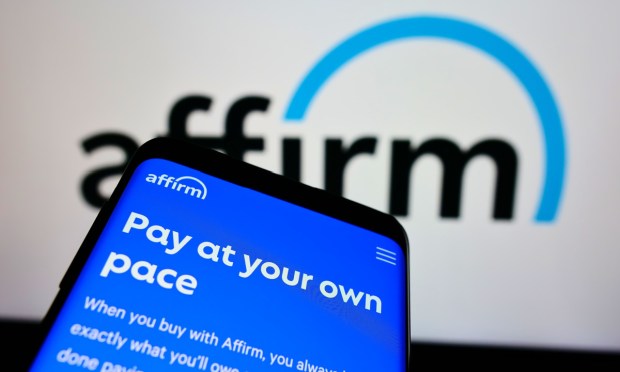
Although it didn’t address two big elephants in the room, buy now, pay later company Affirm rode solid advancements in its debit card and gross merchandise volume metrics to better-than-expected Q3 earnings results.
In what is a continuing referendum on consumer spend this earnings season, CEO Max Levchin painted a picture of a consumer financing FinTech that is cautiously increasing its risk exposure by extending credit to a larger consumer base while trying to maintain control over credit outcomes.
As the company reported Wednesday morning (May 8), Affirm saw its gross merchandise volume (GMV) surge 36% year-over-year to $6.3 billion, marking the fourth consecutive quarter of accelerating growth.
This growth cut across categories and products. The general merchandise category led the way with a 49% increase, followed by travel and ticketing at 35%. Direct-to-consumer GMV also experienced a significant boost, growing 49% year-over-year to reach $1.6 billion.
Affirm’s active consumer base expanded by 13% year-over-year to 18.1 million, and its active merchant count rose 19% to 292,000. Total revenue grew 51% year-over-year to $576 million, with revenue as a percentage of GMV increasing to 9.2% from 8.2% in the prior year.
Levchin said one of the surprises in the latest earnings numbers came from spending at mid-sized businesses.
“Frankly, where I’m most excited is in mid-size businesses, businesses that have $10 to $15 million in GMV,” he said. “They’re awesome because they are very growth-centric businesses. And when merchants grow, we grow faster. One of the things that we’ve noticed in these economic times when a ‘mid-sized business’ signs up with Affirm, our growth rate within that merchant always exceeds theirs. And that’s exactly what majority of mid-sized merchants want to do. They, they want to become larger sized merchants.”
But Levchin did not address — and was not asked by any analysts — about two potential issues that could affect Affirm’s long-term growth picture.
As PYMNTS reported in December, Walmart and Affirm partnered on bringing installment payments to self-checkout cashiers. But the partnership took on a more tentative tone in late April when One, the FinTech that is majority-owned by Walmart, started offering BNPL loans at some locations. Reports at the time noted that the BNPL options — from One and from Affirm — were available for purchases ranging from $100 to as much as a few thousand dollars. The categories range from electronics to jewelry but not groceries.
Affirm also has a financing arrangement with troubled home exercise equipment firm Peloton, which may be bought out by a private equity firm, according to recent reports. Peloton results were excluded from the Affirm revenue breakouts. Peloton’s market capitalization has fallen to $1.3 billion as of Monday (May 6), down from its high of $49.3 billion in January 2021.
Other key points from the Affirm earning announcements include:
The company’s focus on enhancing its core offerings has paid off, with the introduction of an embeddable version of Purchasing Power, an AI-powered customer support assistant, and the continued success of the Affirm Card. According to the company, the card is a “debit card that allows you to pay for purchases now, or request to pay for purchases over time right from the Affirm app.” The card recently surpassed one million active cardholders, with recent user cohorts consistently transacting and capturing higher average annual spend.
Despite the challenging interest rate environment, Affirm has maintained its Revenue Less Transaction Costs (RLTC) as a percentage of GMV within its long-term target range of 3-4%. The company’s earnings presentation showed that it believes that the majority of its funding debt has absorbed the year-over-year increase in the federal funds rate, bolstering confidence in its long-term RLTC target.
Affirm’s operating loss improved by $149 million year-over-year, primarily driven by reduced operating expenses and increased RLTC. Adjusted Operating Income also saw a significant increase of $85 million year-over-year, with an Adjusted Operating Margin of 14% compared to a loss of 2% in the previous year.
Credit quality remains stable, with 30+ day delinquencies for monthly installment loans (excluding Peloton) declining slightly both year-over-year and compared to the previous quarter. Recent monthly installment loan cohorts are performing in line with, or better than, historical cohorts that originated before the COVID-19 pandemic, based on cumulative charge-offs as a percentage of GMV.